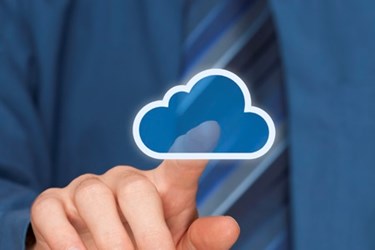5 Trends In Healthcare Cloud Computing For 2020
By Kayla Matthews, Productivity Bytes

The concept of cloud computing dates back to the mid-1990s, pioneered by Apple offshoot General Magic. In 1996, experts used the term for the first time in a Compaq internal document.
A major milestone passed in 1999 when Salesforce became the first website to use enterprise applications via the cloud. With this technology, multiple people could access documents at the same time on the internet. This decision paved the way for further advancements, including Gmail and Microsoft Office 365.
The goal of the cloud is to create an on-demand data network that allows access from anywhere. Back in the 1990s, this idea may have seemed implausible. Today, however, the power of cloud computing has come to fruition.
This technology impacts nearly every industry, including healthcare. What trends can medical professionals expect to see in the coming year?
1. Market Value Increases
Experts expect the healthcare cloud computing market to expand exponentially by 2020 and beyond. In 2018, the market hit $8.5 billion. By 2025, it's expected to grow to more than $55 billion.
Cloud computing offers healthcare professionals instant access to patient data through secure portals and near-limitless storage and control. A physician can store information in seconds and access it just as quickly. This process eliminates the need for hard copies unless specifically requested by the patient.
The growth of this technology in healthcare networks will encourage remote collaboration and data sharing, something that was difficult or impossible with outdated devices.
2. HIPAA And Cloud Computing
While cloud computing is taking the healthcare world by storm, it isn't without its rules. The majority of technology adopted is for non-clinical applications. Facilities must ensure their system is secure. They must also protect patient information from theft.
According to the Department of Health and Human Services, HIPAA covered entities may use cloud services to store electronic protected health information (ePHI). However, each facility is responsible for assessing risks and keeping data secure.
The lack of skilled IT professionals has slowed this technology's adoption. Qualified specialists are in high demand due to the difficulty in finding professionals with HIPAA expertise. This talent drought will likely continue into 2020, slowing the transition to cloud computing systems.
3. The Need For Cybersecurity
With networked systems, such as those found in cloud computing, there's always the possibility of a breach. Medical information is ten times more valuable to identity thieves than credit card information. While most people monitor their credit reports, they don't often pay close attention to their medical records. Cybersecurity in cloud computing will become a significant trend in 2020 and beyond.
According to experts at the Ponemon Institute, the average cost of a healthcare data breach is more than $380 per record, more than twice the global average for other industries. Why? Because hackers covet this data. Facilities and IT teams must shift their focus from functionality to security to prevent costly data breaches and HIPAA violations.
4. Cloud Computing And IoT Support
The Internet of Things (IoT) is a network of connected devices taking the healthcare world by storm. It's also an integral part of healthcare cloud computing. IoT devices generate tons of data. Most healthcare facilities aren't equipped to store or sort through it. The market for medical IoT devices is expected to be worth more than $500 billion by 2025.
Many healthcare facilities wish to take cloud computing to the next level by adopting cutting edge technology. Instead of collecting data and transmitting it to the cloud, the system analyzes and acts on it at the point of collection. With IoT devices creating terabytes of data, this in-place processing can make the system more efficient and reduce time wasted.
5. Data Automation And Storage
Cloud computing in the healthcare sector supports a push toward data automation in 2020 and beyond. This technology, when combined with automation, streamlines the intake and discharge processes and eliminates the need for paper documents.
Automation will prove invaluable as the healthcare sector continues to change and evolve. The industry has already, for the most part, left physical records behind in favor of ePHI. Automating data collection and storage is the next logical step.
Healthcare Cloud Computing — Looking Ahead To 2020
Cloud computing and healthcare go hand in hand and will continue to do so in 2020.
One trend that will affect the industry is the lack of IT professionals who specialize in cloud computing and HIPPA compliance. With the vast amounts of data uploaded to the cloud, security is a necessity. When it's not a priority, data is at risk. The average healthcare breach costs hundreds, plus it could result in a lawsuit.
Cloud computing has a significant role in the future of healthcare. How will the industry continue to shift in the coming years? Which innovations are on the horizon?
About The Author
Kayla Matthews is a MedTech writer whose work has appeared on HIT Consultant, Medical Economics and HITECH Answers, among other industry publications. To read more from Kayla, please connect with her on LinkedIn, or visit her personal tech blog at https://productivitybytes.com.
